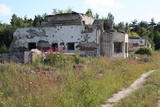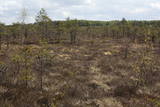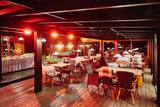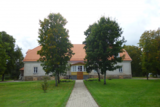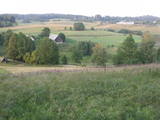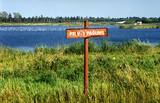| Нo | Название | Описание |
|---|---|---|
|
Цесвайне славится старинными традициями сыроварения, так как «Цесвайнес пиенс» образовался на базе сыроварни имения Цесвайне. Предприятие производит масло, творог, сыр, домашний сыр, сметану. Продукцию можно приобрести в магазине „Pie Arkas” рядом с производством. |
||
|
In Otepää wurde am 4. Juni 1884 die estnische Fahne geweiht. Im Pastorat ist ein Zimmer der estnischen Fahne eingerichtet. |
||
|
Поселение расположено между улицей Пиладжу и левым берегом Силиньупе. В III–II тысячелетии до нашей эры здесь находилось поселение рыбаков и охотников, на месте которого установлен информационный памятный камень (скульпт. О. Скарайнис). Силиньупское поселение – наиболее известное место поселения древнего человека на территории Кемерского национального парка. Здесь найдены многие старинные предметы: осколки глиняной посуды, наконечники стрел, кусочки кремня и янтаря и др. Возможно, что на территории соседних частных домов находился могильник поселения. Небольшую часть находок можно увидеть в Лапмежциемском музее, остальные находятся в Латвийском Национальном историческом музее. |
||
|
Пиццерия находится в Талси, недалеко от озера Талси. В пиццерии Stender’s в милой и уютной атмосфере предлагают особые пиццы Stender's, которые приготовлены, соблюдая старинные традиции пекарей пиццы, объединив их с наилучшим современным опытом. Конечно же, не обходится без блинов и горшочков, а также вторых блюд. Количество мест – 30. |
||
|
Профессиональный сельскохозяйственный тур с посещением местных фермерских хозяйств, типичных для региона. Мы встретим и познакомимся с вами в Вильнюсе, где проведем обзорную экскурсию по городу. На следующий день отправимся в Каунас на профессиональные встречи и прогулку до городу. На пути в Ригу посетим живописный замок Тракай, расположенный на озере. В Паневежисе нанесем визит профессиональному выращивателю яблок. В Риге вас ждет обзорная экскурсия по Старому Городу, а также посещение впечатляющего Центрального рынка. В Бауске нанесем профессиональный визит на ферму, специализирующуюся на введении инновативных методов фермерства (зерновые культуры, овощи, картофель). На пути из Риги в Таллинн остановимся в городе Сигулда, где посетим средневековый замок Турайду с великолепными панорамными видами на древнюю долину реки Гауя. В Таллинне посетим Старый Город, пройдемся по узким мощеным улочкам, а потом нанесем профессиональный визит на молочную ферму в Саку, встретимся с Эстонским Фермерским Союзом и посетим другую скотоводческую и земледельческую ферму около Таллинна. |
||
|
This is the thickest European Ash (Fraxius excelsior) in Latvia and the Baltic States. The homestead where the tree is found is the memorial museum of the painter Ģederts Eliass, and for that reason, the tree is sometimes also known as the Eliass ash tree.
|
||
|
В Григальциемсе частично сохранился комплекс из нескольких зданий, о бывшем применении которых недостаточно информации. Здания снесены и использованы под строительные материалы.
|
||
|
Аукштайтия является крупнейшим и одним из старейших регионов Литвы, который с 15-го века называют «истинной Литвой». В этом путешествии вы насладитесь сельскими дарами, которые Аукштайтский край предлагает сегодня. |
||
|
Territory established mainly for protection of bog myrtle and various bird species. An interesting fact is that bog myrtle or sweet gale is used as ingredient for making famous Riga Black Balsam. Brienamais purvs (wade bog) is hard to find and reach therefore it is not suitable for tourism.
|
||
|
Roograhu ostas restorāns atrodas tieši jūras krastā un ir atvērts visu gadu. Sortimentā ir picas, gardas zupas, salāti un pamatēdieni. Roograhu ostas restorāna ēdienkartē netrūkst arī vietējo sezonālo zivju. Ostas ēkā darbojas arī viesu māja un kubla pirts ar skatu uz jūru. |
||
|
Находится на перекрестке дорог Смилтене – Гулбене – Лизума. Рассказывают, что крыша первой деревянной церкви была покрыта дерном. Построенный фирмой Зауэра орган (действующий) является одним из лучших в Латвии. Церковный гид – органист. |
||
|
В фондах музея хранится более 120 000 предметов, экспозиция представляет историю Лиепаи и юга Курземе – начиная с каменного века и вплоть до 19-го века. Посетителям предлагается также экспозиция, посвященная жизни и творчеству скульптора по дереву Микеля Панкока (1894-1983). В других выставочных залах периодически проводятся выставки современного искусства. |
||
|
В хозяйстве уже на протяжении 20 лет занимаются производством сыра из молока коров, выращенных в хозяйстве. Произведенный здесь сыр можно приобрести на крупнейших латвийских базарах и ярмарках. |
||
|
Находится на обочине Видземского шоссе (A2). Размещен в красивом срубе с соломенной кровлей и старинным интерьером. В приготовлении блюд объединяют старинные традиции с требованиями современных клиентов. Латышская кухня: Холодный и суп с фрикадельками, серый горох с салом, ячменная каша, миноги в горчичном соусе, жареный на углях судак, жареное свиное ухо, жаркое из свиной голени, куриная печень в сметанном соусе, слойка из черного хлеба, творожный десерт с клюквенным соусом. |
||
|
Усадьба «Анцес» построена как отцовский подарок сыну Ульрихаму Иоганну фон Беру. После 1766 года здание усадьбы было перестроено и богато украшено. в этот период здание было двухэтажным, с большими окнами и паркетными полами. В 10-е годы 19-го века в усадьбе размещаются французские солдаты и наносят зданию значительные повреждения. Поэтому чуть позже второй этаж был снесен и, после проведения капитального ремонта, усадьба приспособлена под квартиры управляющего и чиновников. В 1920-м году усадьба «Анцес» была отчуждена у ее последнего владельца Георга Бера и становится государственным имуществом. |
||
|
Viewing tower on pontoons, and there is a footpath to get to it. The tower offers a view of nearly all of Lake Sloka, all the way to Kauguri. Particularly visible is the northern part of the lake. There is also a sulphur spring. The site is good for bird-watching throughout the year, including the winter, because parts of the lake do not freeze over. |
||
|
В саду красивых и практичных идей великолепные посадки цветов и богатая коллекция хвойных растений радуют глаза круглый год. За домом в хозяйственной зоне находятся огород с корнеплодами и теплицы. |
||
|
This restricted area protects the highest hillock in the Alūksne highlands – Dēliņkalns Hill – as well as the biotopes on its hillsides. The local landscape is also protected. Downhill ski trails are on the mountain, and its southern side offers lovely views.
|
||
|
A restricted area with a set of artificial ponds to the South-west of Saldus. The ponds attract many different kinds of birds during nesting and migration season. The location has not been improved for tourist purposes, but it is still an interesting place for some bird-watching. The forests around the ponds are also home to many protected birds and species of bat. |
||
|
Viens no lielākajiem Augštaitijas pilskalniem, kas 2011. g. pēc vērienīgiem rekonstrukcijas darbiem ir izzināms jaunā kvalitātē - gan no infrastruktūras, gan arī ainaviskā viedokļa, jo iepriekš biezais pamežs (tagad retināts) traucēja uztvert iespaidīgo objektu. Arī no pilskalna plakuma paveras labs skats uz diviem blakus esošajiem ezeriem. Tā virsotnē apskatāms piemiņas akmens, kas vēsta par pirmā Lietuvas valsts prezidenta Antana Smetona (Antanas Smetona) apmeklējumu 1934. g. viņa 60 gadu jubilejā. Pilskalns it ticis apdzīvots jau I tūkstošgadē pirms Kristus. Uzskata, ka 14. – 15. gs. te atradusies hronikās aprakstītā Linkmenu pils. Jaunizveidotā taka pilskalnu savieno ar vēl vienu populāru apskates objektu – Ladakalni. |
||







